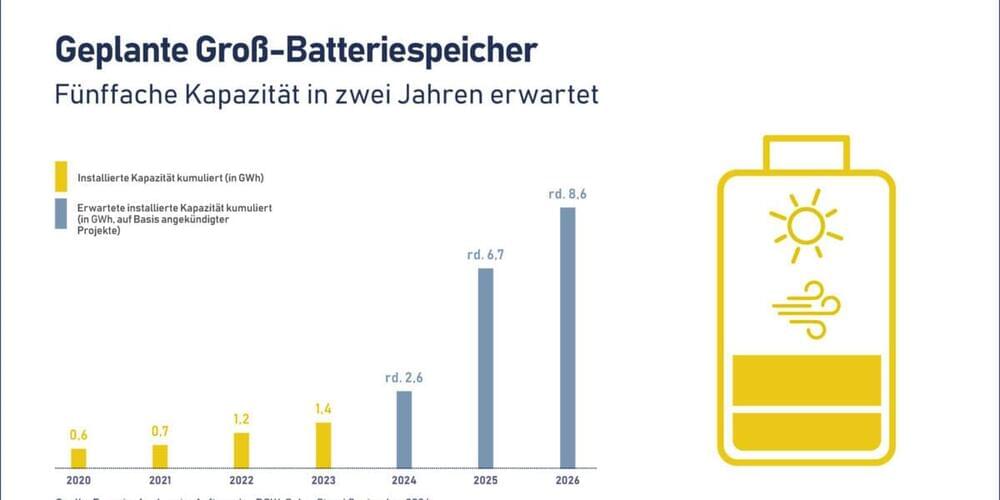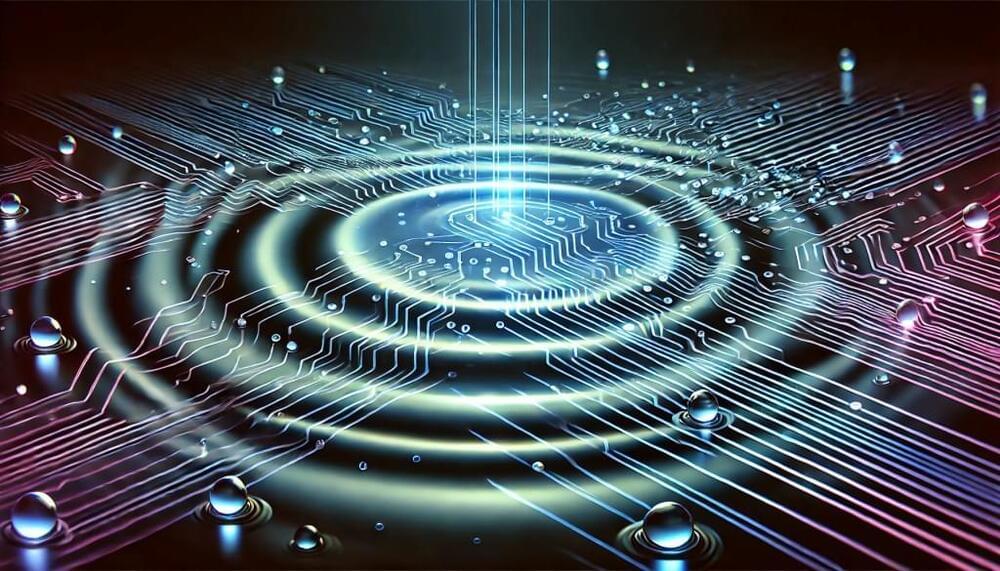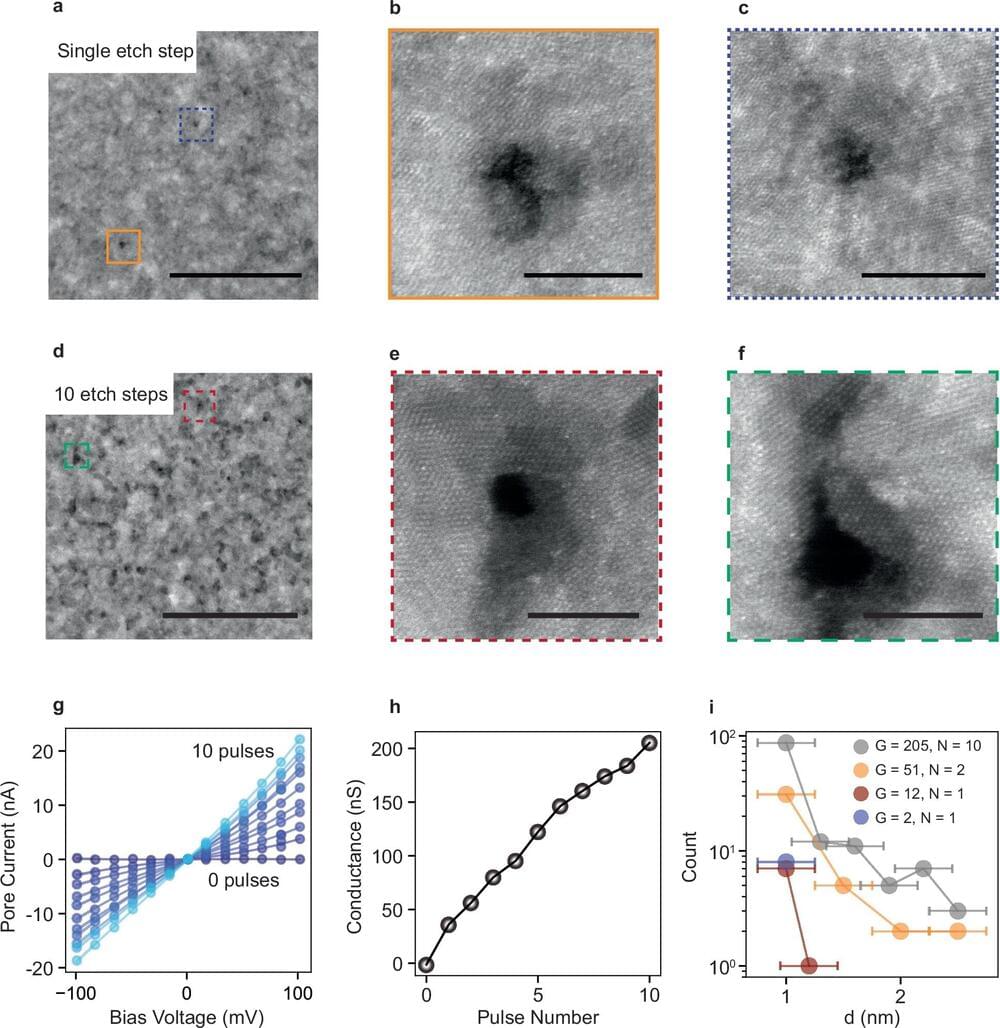Industry body the Bundesverband Solarwirtschaft (BSW-Solar) expects around 7 GWh of large-scale battery storage to be added during that period.


I have my own introduction quantum mechanics course that you can check out on Brilliant! First 30 days are free and 20% off the annual premium subscription when you use our link ➜ https://brilliant.org/sabine.
Physicists are obsessed with black holes, but we still don’t know what’s going on inside of them. One idea is that black holes do not truly exist, but instead they are big quantum objects that have been called fuzzballs or frozen stars. This idea has a big problem. Let’s take a look.
This video comes with a quiz which you can take here: https://quizwithit.com/start_thequiz/.…
Paper: https://journals.aps.org/prd/abstract…
🤓 Check out my new quiz app ➜ http://quizwithit.com/
💌 Support me on Donorbox ➜ https://donorbox.org/swtg.
📝 Transcripts and written news on Substack ➜ https://sciencewtg.substack.com/
👉 Transcript with links to references on Patreon ➜ / sabine.
📩 Free weekly science newsletter ➜ https://sabinehossenfelder.com/newsle…
👂 Audio only podcast ➜ https://open.spotify.com/show/0MkNfXl…
🔗 Join this channel to get access to perks ➜
/ @sabinehossenfelder.
🖼️ On instagram ➜ / sciencewtg.
#science #sciencenews #physics #space

All physical observations are made relative to a reference frame, which is a system in its own right. If the system of interest admits a group symmetry, the reference frame observing it must transform commensurately under the group to ensure the covariance of the combined system. We point out that the crossed product is a way to realize quantum reference frames from the bottom-up; adjoining a quantum reference frame and imposing constraints generates a crossed product algebra. We provide a top-down specification of crossed product algebras and show that one cannot obtain inequivalent quantum reference frames using this approach. As a remedy, we define an abstract algebra associated to the system and symmetry group built out of relational crossed product algebras associated with different choices of quantum reference frames.

Recently Danielson, Satishchandran, and Wald (DSW) have shown that quantum superpositions held outside of Killing horizons will decohere at a steady rate. This occurs because of the inevitable radiation of soft photons (gravitons), which imprint a electromagnetic (gravitational) “which-path’’ memory onto the horizon. Rather than appealing to this global description, an experimenter ought to also have a local description for the cause of decoherence. One might intuitively guess that this is just the bombardment of Hawking/Unruh radiation on the system, however simple calculations challenge this idea—the same superposition held in a finite temperature inertial laboratory does not decohere at the DSW rate. In this work we provide a local description of the decoherence by mapping the DSW setup onto a worldline-localized model resembling an Unruh-DeWitt particle detector.
When is an empty tube not an empty tube? When it’s a ramjet that uses rotating detonation technology to propel aircraft at hypersonic speeds. A case in point is Venus Aerospace’s new Venus Detonation Ramjet 2000 lb Thrust Engine (VDR2).
One of the biggest hurdles that need to be cleared in making hypersonic flight practical is building engines that are capable of sustained thrust.
Currently, hypersonic systems are mainly based on glide bodies that are boosted to high speed and altitude by rockets and then accelerate to over Mach 5 by gliding back to lower altitudes. However, if you want to build airliners that can fly from San Francisco to Tokyo in one hour, you need something more like a jet engine.
One of the key features of the eVinci microreactor is its impressive versatility. It will have the capability to generate five megawatts of electricity, produce over 13 megawatts of high-temperature heat, or operate in combined heat and power mode, according to the Saskatchewan Research Council.
To put this in perspective, the Nuclear Regulatory Commission reported in 2012 that a single megawatt of capacity from a conventional power plant can meet the energy needs of 400 to 900 homes in a year.
Westinghouse views the eVinci microreactor as a groundbreaking technology that holds great promise for future energy requirements.

A breakthrough study has validated the existence of a stable single-electron covalent bond between two carbon atoms, supporting Linus Pauling’s early 20th-century theory and opening avenues for chemical research.
Covalent bonds, in which two atoms share a pair of electrons, form the foundation of most organic compounds. In 1931, the Nobel Laureate Linus Pauling suggested that covalent bonds made from just a single, unpaired electron could exist, but these single-electron bonds would likely be much weaker than a standard covalent bond involving a pair of electrons.
Since then, single-electron bonds have been observed, but never in carbon or hydrogen. The search for one-electron bonds shared between carbon atoms has stymied scientists.


Quantum mechanics: it’s the realm of science where nothing is normal, and everything seems to undermine the fundaments of our common understanding of reality. Nonetheless, we simple humans tick on.
But quantum physicists, who pride themselves on staring into the abyss and gleaning its spooky secrets, have just discovered another baffling phenomenon to make your mind melt: “negative time.”
As detailed in a yet-to-be-peer-reviewed study covered by Scientific American, a team of researchers say they’ve observed photons exhibiting this bizarre temporal behavior as the result of what’s known as atomic excitation.

But these exciting applications have been limited in part by the tedious process of tunneling individual sub-nanometer pores one by one.
“If we are to ever scale up 2D material membranes to be relevant for applications outside the laboratory, the ‘one pore at a time’ method just isn’t feasible,” said recent UChicago Pritzker School of Molecular Engineering (PME) Ph.D. graduate Eli Hoenig. “But, even within the confines of laboratory experiment, a nanoporous membrane provides significantly larger signals than a single pore, increasing the sensitivity.”
Hoenig is first author of a paper recently published in Nature Communications that found a novel path around this longstanding problem. Under PME Asst. Prof. Chong Liu, the team created a new method of pore generation that builds materials with intentional weak spots, then applies a remote electric field to generate multiple nanoscale pores all at once.